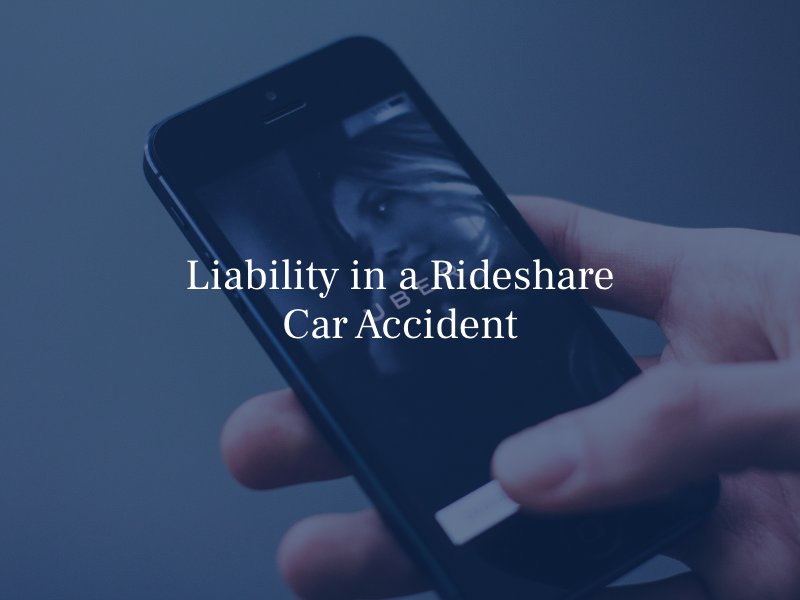Who Is Liable in a Rideshare Car Accident?
December 14, 2023 Posted In Car Accidents
Determining liability for a rideshare car accident is a case-specific process contingent on factors such as the cause of the accident and whether the rideshare driver was actively working at the time.

Liability in Rideshare Accidents
In typical car accidents, the at-fault driver is liable for any resulting damages. In a rideshare accident, the driver’s employer may be partially or entirely liable. However, rideshare companies will only cover an accident under certain conditions. Here are some examples of different scenarios and who would be liable:
- Rideshare App is Off or Driver is Not Logged On: If the rideshare driver is not actively working, meaning the app is turned off or they are not logged in, their private auto insurance applies in the event of an accident.
- Rideshare App is On, Driver is “Available,” and Waiting for a Rider: When the rideshare driver is available for rides but has not yet received a request, contingent liability coverage comes into play. If the driver’s personal auto policy doesn’t cover the collision, the rideshare company covers damages up to policy limits.
- Rideshare Driver has Accepted a Ride, is Picking Up a Rider, or is Transporting a Rider: For these active phases, the rideshare company’s commercial insurance takes precedence. Companies like Uber and Lyft offer coverage up to $1 million for property damage and bodily injury per accident, with an additional $1 million if you were a passenger in the rideshare vehicle and the other driver involved is uninsured or underinsured.
In cases where a third party, such as another driver, a government agency, or a defective part manufacturer, causes or contributes to an accident, their respective insurance company would be liable.
How is Liability Determined After a Rideshare Accident?
The determination of liability after a rideshare accident involves various parties, and the process can unfold through several means:
Law Enforcement
Police officers who respond to the accident scene play a crucial role in assessing the situation and, if necessary, issuing citations. The police report they generate often includes their findings regarding the cause of the accident and any observed violations.
Insurance Companies
The insurance companies representing the involved parties investigate the accident to determine liability for the purpose of processing claims. Insurance adjusters review evidence, statements, and the police report to establish fault.
Eyewitnesses
Statements from eyewitnesses who observed the crash can contribute to the determination of liability. Their perspectives may offer additional insights and corroborate or challenge other accounts.
Accident Reconstruction Experts
In more complex cases, accident reconstruction experts may be called upon to analyze the scene, study vehicle damage, and reconstruct the events leading up to the accident. Their findings can provide a scientific basis for determining fault.
Photographic and Video Evidence
Photos and videos taken at the scene, whether by witnesses or from surveillance cameras, can serve as valuable evidence in establishing the sequence of events and identifying responsible parties.
As part of the insurance claims process, adjusters from the involved parties’ insurance companies may negotiate and reach a consensus on liability based on the available evidence.
An Attorney Can Help
Speak to a Riverside Ride Sharing Accident Attorney as soon as possible. They will immediately begin investigating your collision to help you determine fault, gather evidence, and navigate the claims process.